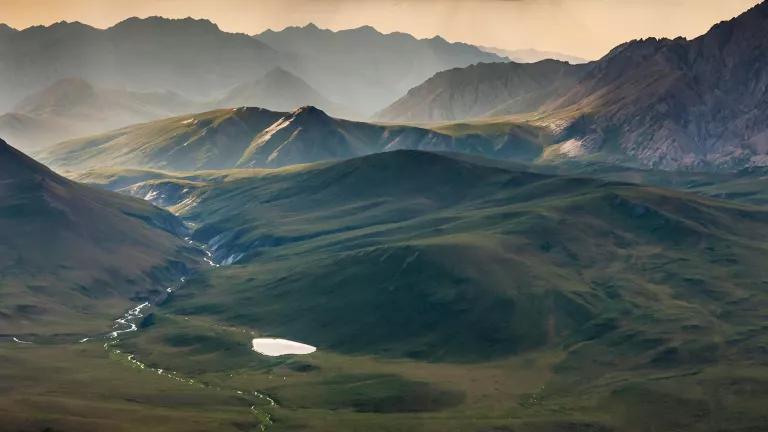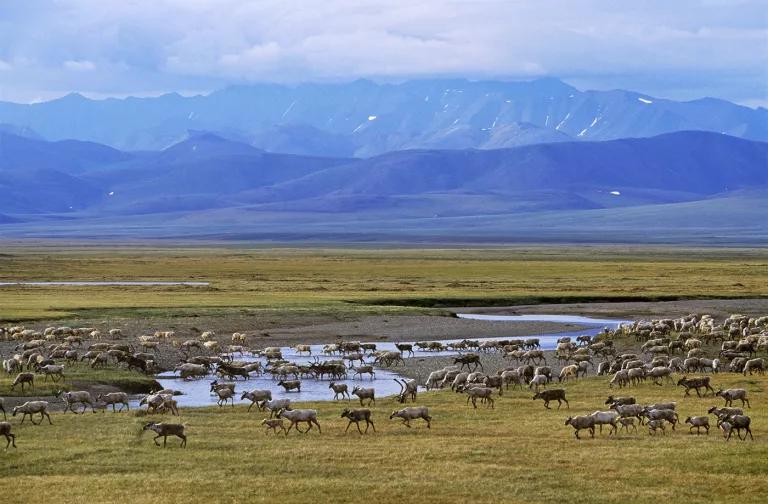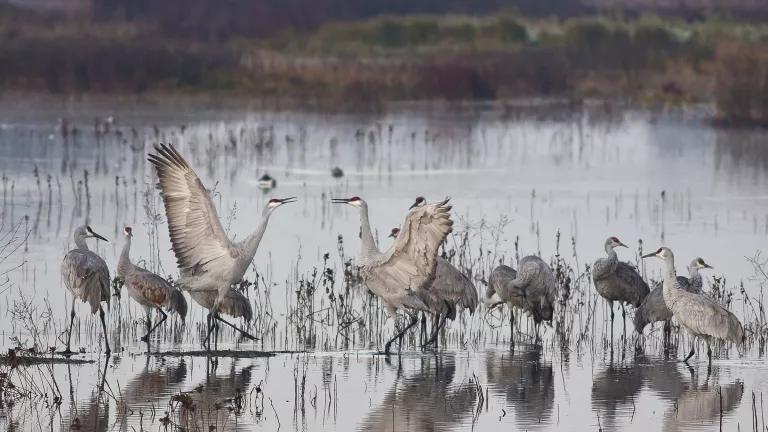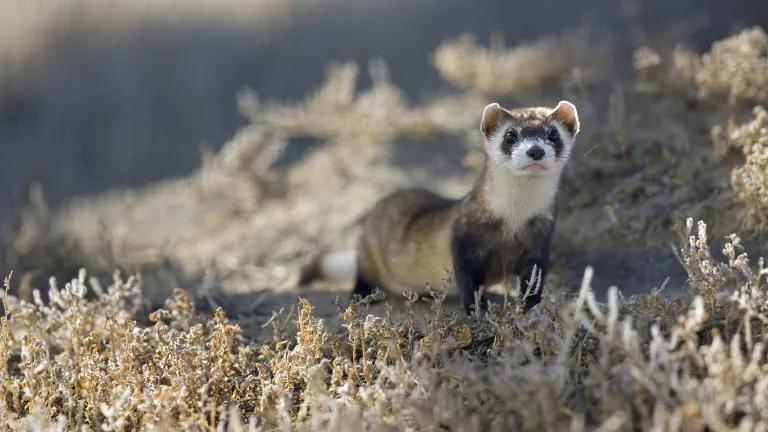Sacrificing the Arctic Refuge Can't Save Trump's Tax-Cut Plan for the Rich

You don’t pay for a $1.5 trillion handout with $100 million a year.
Here’s an idea. Let’s give a $1.5 trillion tax handout to corporations, Wall Street high rollers, and the country’s wealthiest families, then tell everybody we’ll help pay for it by giving away protected public lands to big oil and gas companies.
That’s what President Trump and his Republican allies on Capitol Hill are trying to get away with as part of the latest GOP con game: giving away public resources for private gain while claiming to help the little guy.
Let’s go beyond the falsehoods and look at the facts.
Nearly 60 years ago, President Dwight Eisenhower set aside the Arctic National Wildlife Refuge to protect one of the last wild places on earth against threats from the oil and gas industry and others. Nearly 20 million acres of coastal plain and mountain peaks, the refuge is home to salmon, cod, and 40 other kinds of fish; to grizzly bears, bull moose, and noble musk oxen; to the snowy owl, golden eagle, peregrine falcon, and other birds that visit the refuge annually from every state in our country.
Ever since the refuge came into place, the oil and gas industry has been twisting arms in Washington, trying to dig up and despoil these special lands. No fewer than 12 times, in fact, the industry has appealed to Congress in an attempt to pull off this craven land grab.
Now it’s back again, this time abetted by a ruinous presidency waging the worst administrative attack in our history on clean air, safe water, and public lands and trying to sell the country on a lopsided tax giveaway to the wealthy.
Republican leaders in Congress have made a shabby pretense of coming up with smoke-and-mirror schemes they claim would offset budget losses of $1.5 trillion over the coming decade. We’ve all read about some of the loopy ideas being floated: cutting or eliminating federal deductions for state income taxes or local property taxes, for example, or other provisions that provide sensible relief to middle-income working families.
Now, to that charade they’ve added another. Exposing the Arctic Refuge to the hazard and harm of oil and gas drilling, the administration and Republican leaders in Congress claim, could generate, on average, $100 million a year in new federal revenue over the coming decade.
That’s ridiculous.
First of all, $100 million won’t pay one day’s worth of interest on the $1.5 trillion the tax giveaways would add to the national debt. The interest alone on that much money, at 3 percent a year, would be $45 billion annually. That’s $123 million per day. You can’t pay for a $1.5 trillion handout with $100 million a year.
Even so, sacrificing the Arctic Refuge to industrial ruin won’t raise $100 million a year. A recent analysis by the nonprofit Center for American Progress concludes that exposing these lands to the ravages of oil and gas drilling would bring the federal treasury about $3.8 million per year, on average, over the next decade.
Why? Given the current lack of roads, pipelines, and other infrastructure, no significant oil and gas production is likely to occur for at least a decade after operations begin. That means the government would receive no royalty payments on the oil until then. Companies would pay the federal government only for drilling rights, sold at auction, generally for less than $50 an acre.
That’s been happening since 1999 on federal land in the National Petroleum Reserve‒Alaska, west of the Arctic Refuge. In 18 years, the federal government has leased 5.6 million acres of that land to oil and gas companies, collecting a grand total of $281 million in lease fees. That’s an average of $15.6 million a year for an area of land nearly four times the size of the coastal plain the industry is eyeing in the Arctic Refuge. Leasing precious public lands for industrial oil and gas production would put the refuge and all it supports at risk, but it wouldn’t even show up as a rounding error in a $1.5 trillion tax cut.
If congressional Republicans are serious about responsible budgeting, they could end subsidies to the oil and gas industry, subsidies that cost taxpayers at least $4.7 billion a year―and by some measures nearly twice that much. There’s no good reason a working American should have to pay one thin dime to buttress profits for one of the richest industries in the history of the world. Those subsidies should end today.
Of course, the industry and its GOP allies claim that tapping this oil can help offset U.S. purchases of foreign oil. That may be the biggest whopper yet.
Every day in this country, oil companies export nearly six million barrels of crude oil or refined fuels and other petroleum products. That’s more than triple―3.3 times―2008 export levels. U.S. petroleum exports of 5.9 million barrels a day are the equivalent of 30 percent of U.S. oil consumption. The industry can’t claim that producing oil on public lands is about national security while it’s sending enough petroleum beyond our shores to cover a third of every gallon we burn.
There’s a reason Republican leaders are using budget maneuvers as the vehicle for sacrificing the Arctic Refuge. Most budget matters aren’t subject to a filibuster in the Senate, so such measures can pass without the 60 votes required to break a filibuster. This is nothing more than a backdoor way to try to hand over the Arctic Refuge without securing the support ordinarily required of any Senate legislation.

There’s another reason the industry and its GOP allies want to do that. Public lands are a public trust, set aside in the public interest. Seventy-one percent of U.S. citizens favor clean power from the wind and sun over oil, gas, and coal production, and 59 percent prefer environmental protection over increased fossil fuel development.
As well they should. As the federal government reported just last week, Alaska is on the front lines of climate change. With temperatures rising in the Last Frontier twice as quickly as the global average, the state has seen a sharp increase in wildfires. Permafrost is melting. And indigenous people are seeing their way of life threatened by changes in the natural world that has sustained them for millennia.
There are more than one million acres of federal land in Alaska already under lease to oil and gas companies. The last thing we need is more fossil fuel development in a sanctuary set aside so that future generations of Americans might know the natural splendor of that special place, much as the first Americans experienced it long ago.



